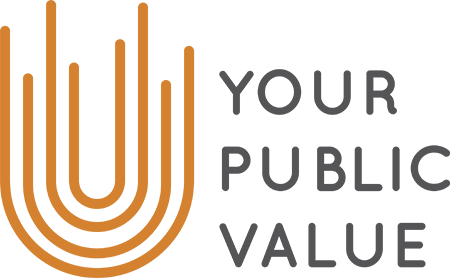What Scientific Research and Rock Climbing have to do with Public Value
Public Value is more than just for business. This is what Anne Twombly, a thinker on the partnership between Global Development and Businesses tells Your Public Value today. Previously from the NGO sector, Anne Twombly continues to seek different perspectives by which to understand the world. She specializes in International Relations with attention to East Asia and West Africa, as well as Non-Profit and Business Management. Anne Twombly placed first in the 2017 Drucker Challenge. Invited by Your Public Value to share what the concept Public Value means to her, this is what she has to say:
“There is a person who is simultaneously a Native American, a father, a researcher, a son, an uncle, a teacher, a world traveller, a knowledge keeper and a knowledge seeker. He is trying to change the way we pursue knowledge by relying on networks of accountability instead of only impersonal scientific inquiry. There were two men who rebelled against gravity and expectations and climbed the vertical cliffs of Yosemite. Their opposing methods clashed, creating a bitter rivalry and a new sport. And there is an idea called Public Value that finds its way woven into both, and is changing the face of business so much that we may not recognize our own future.
The first attribute that Shawn Wilson uses to describe himself is that he is Opaskwayak Cree, from a Native American tribe located around Manitoba in Canada. It is an identity that is very important to him, and it has a huge influence on his work as a community psychologist and researcher. Shawn is trying something both old and very new; he integrates the indigenous philosophies of his people into the formula of Western scientific research. He calls it the “Indigenous Research Paradigm”, which allows him to conduct studies in a way that satisfies the standards of Western Science – which to him and his people it is a colonizing force – and that respects the values and traditions of his people.
Shawn found that instead of the progression from hypothesis to results that Western Science uses, the value of relationships is what unites his and other indigenous cultures around the world. So Shawn designed a research paradigm based on honoring the relationships between people and between ideas. Since it is a paradigm, Shawn’s framework doesn’t determine what exactly is being researched, but rather it shapes how the process of researching occurs.
The change in methodology is a relational one; how does the researcher relate to both the ideas in question and the people affected by the research? While most of the changes affect the outcome and purpose of research, there are a few cosmetic changes that are indicative of the deeper changes that an Indigenous Research Paradigm brings. Shawn, and other researchers who follow this paradigm, call each subject and contributor by their name and make in depth introductions to the audience as if they were meeting face-to-face. As an example, he wrote his book as a letter to his children, acknowledging the reasons why he is developing this new way of research – to provide a better way to unite Native American culture with dominant Western culture – and to acknowledge his multi-dimensional role as a father, researcher, son, uncle, teacher, traveller, knowledge keeper, and knowledge seeker. Even I try to follow it here, by calling him by his first name and remembering how he caringly explained his ideas to me when I met him at a lecture in Tacoma, Washington in 2013.[1]
The Indigenous Research Paradigm is a supplement to the Scientific Method like Public Value is a remedy to typical business practices. Public Value shapes how a company achieves its targets; giving awareness on how a supply chain can impact stakeholders, what implications there are for strict waste management, and so on. It allows a company to pursue its own targets for products, customers, or expansion, but gives the support and illuminates the incentives to pursue those targets in a way that adds value for the public. ‘Public Value’ as a tool exists for other spheres of thought, from choosing a holistic medical practitioner over a specialist to determining how to reconcile the profitability and sustainability of a business model. That ‘Public Value’ as a concept is this widespread in other disciplines demonstrates that proactive, intentional integration of the needs of others into the necessary tasks of our lives is on the rise.
A central part of knowledge sharing in Indigenous cultures is through stories and metaphor. Instead of providing the audience with hard facts and pre-digested results, knowledge givers in indigenous societies provide knowledge seekers with metaphors to allow each individual to understand the moral and context in their own unique way. So to try out Shawn’s paradigm for myself, I will use a story to illustrate what Public Value means to me.
A metaphor on partnership
In the 1950s and early 60s, there were two men living out of tents in Yosemite National Park. Royal Robbins and Warren Harding came there to admire the awe-inspiring rock formations, but faced with such majesty they were compelled to do something no one else had done: climb those vertical cliffs. At this time, rock climbing was only a footnote among the skills needed in the well-developed sport of mountaineering. So in doing what no one had done before, they became the pioneers of rock climbing.
Despite their presence in the same valley at the same time, striving to achieve the same unthinkable goal, they were bitter rivals. Warren Harding climbed whatever he could climb, and used any method he could think of to achieve it. This was creative, destructive, unsavory, and successful. Royal Robbins was a purist, who read classic literature and believed that climbing was a form of spirituality with a correct method, respect for nature, and reverence for the act of climbing. Each was competing with the other for the most monumental climbs, the most notoriety, and the chance to set the standard for rock climbing. Their legacy – the care and conquering of the rocks – was determined by who was most successful. For years, the future of rock climbing was unknown: would sustainable, respectful, aware climbing become the norm, or would the sheer drive to succeed by any destructive means be the preferred method?
As they scaled the greats – Half Dome, the Nose of El Capitan, the Dawn Wall – they tried to prove to each other that his own method was best, and the other’s was an offense to the sport of climbing. And while Warren Harding sometimes stole the public’s attention as the most famous climber, Royal Robbins pioneered and replicated each climb faster, with less equipment, and in a more nature-friendly way. While Warren Harding sometimes took months on a climb, making trips up and down the wall setting fixed ropes to ascend like an elevator, Royal Robbins could make the trip in 3 weeks, or even a few days. Warren Harding stole the public’s attention with making the climb first, but Royal Robbins made the climb best.
On their last monumental ascent in Yosemite – up the Dawn Wall – it was the usual arrangement. Harding had set a route up the wall using fixed ropes and bolts driven into the rock’s surface, gaudy metal piercings that glinted in the sunlight that could be seen for miles away. He was greeted at the top by film crews and reporters, eager to document the man who had climbed the most unfathomable wall. Robbins stood contemplating the wall from the ground, seething at how Harding had vandalized this natural wonder. So when he was ready to make his ascent, he brought a few extra tools with him. Climbing up the wall, he stopped at each bolt marring the rock face, and chopped it off. But he climbed higher and higher, and the rock became more and more challenging to climb. Towering above the valley, Robbins saw the challenge that Harding had solved. The bolts and fixed ropes Harding had set were not just to deface nature for man’s conquest, they were set creatively and without them, even Robbins would not have reached the top. Their rivalry shrank after that, and their last ascent in Yosemite ended with a whole new generation of rock climbers.[2]
Our methods matter, be it sport, research, or business. But from this story I also sense that the way is complicated and that compromises are integral to addressing all the differing needs and goals of stakeholders. While Royal Robbins was clearly more eco-friendly and concerned with preserving harmony between nature and humanity’s conquering of it, he was faced with the compromise of needing Harding’s intrusive methods to complete his ascent. The dilemma that Public Value faces is in discovering the balance point between sacrificially offering value and viciously pursuing profit.
Beyond business, addressing the needs of society and the environment
Public Value helps businesses become proactive players in addressing the needs of individuals, communities and the environment. It recognizes the intricate, codependent relationships that power the economy; of dwindling natural resources, of energy-consuming technological developments, and of humans defining themselves as resources so as not to become obsolete. The obsolescence of humans is only one fear among many when it comes to technological advancements. Developments in nano-technology, AI, crypto-currencies, blockchain, and other new technologies are being propelled into the daily lives of everyday people often without their consent. This leads to a feeling of powerlessness, and powerlessness breeds fear. Integrating Public Value into research firms, businesses, and everything in-between is one way to counter this rising fear, and to re-center ourselves that we mercilessly pursue progress in order improve the quality of our lives.”
[1] In his book Research Is Ceremony; Indigenous Research Methods, Shawn explains how personally acknowledging the human influences in research can be reconciled with the ethical standards of Western Science concerning privacy. That discussion can be found in Chapter 4, “Elements of an Indigenous Research Paradigm”.
[2] This is a retelling of Reel Rock’s 2014 documentary, Valley Uprising.
Your Public Value continues to publish guest bloggers who are happy to reflect on this one question: What does Public Value mean to you? Last month, Lucy Findlay, Managing Director of Social Enterprise Mark CIC, explained that big business should take the lead from social entreprises. Today, Anne Twombly offers a refreshing metaphor on what Public Value means to her. We’re looking forward to reading YOUR vision of Public Value. Do send your comments to contact [AT] yourpublicvalue.org or by commenting this blog.

